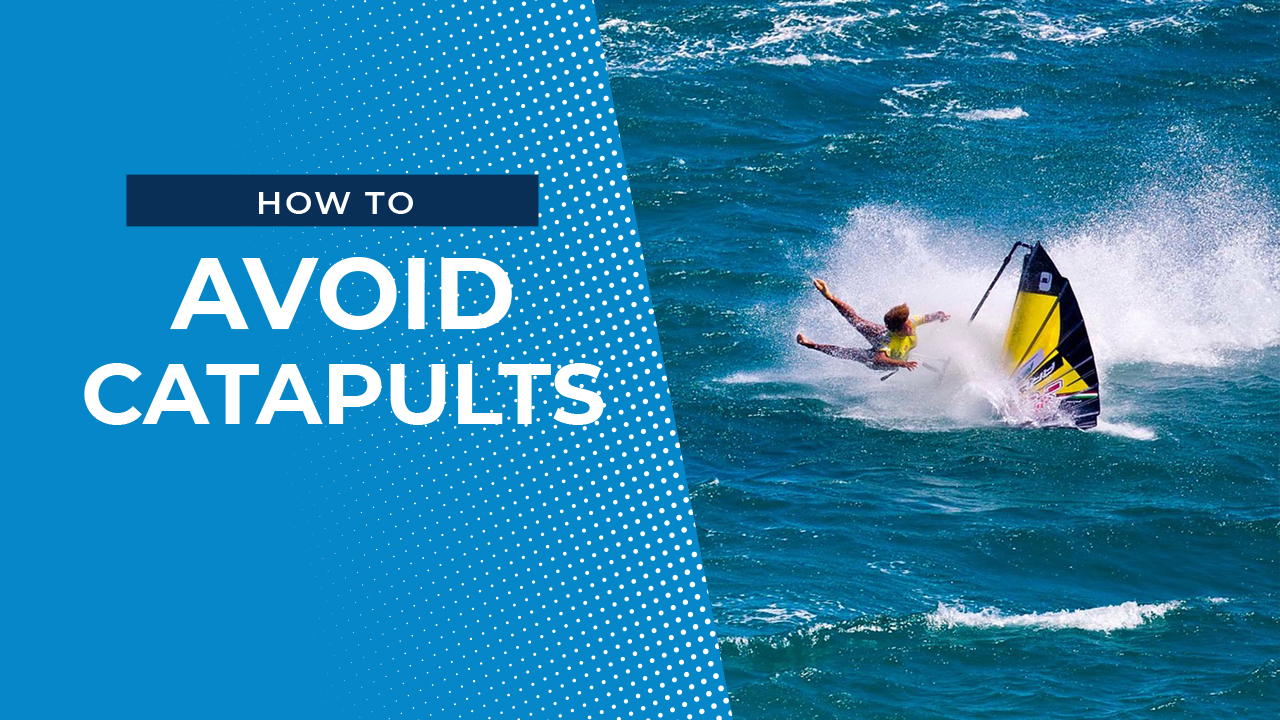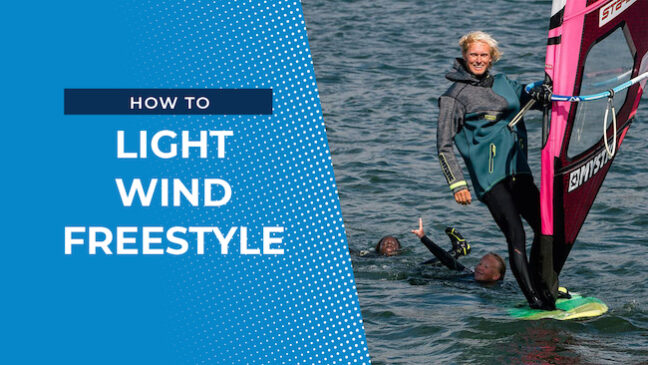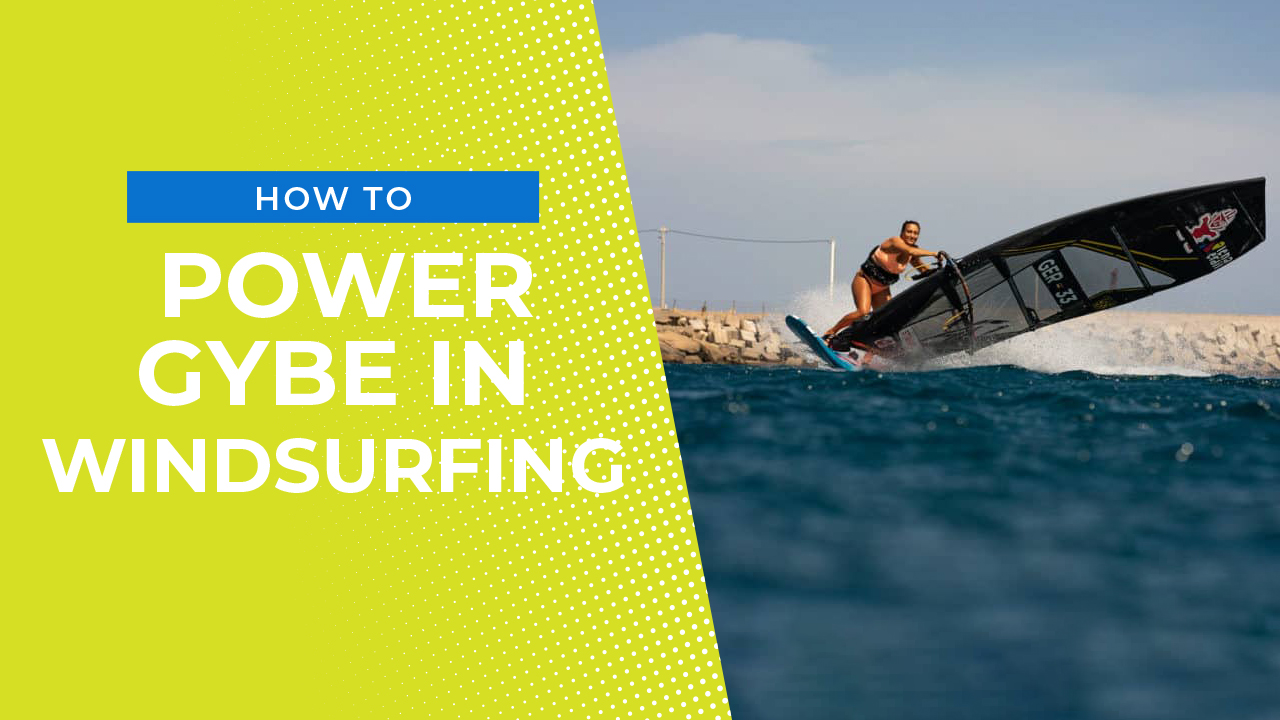Your feet and body are flying through the air, and your mast is heading full speed towards the nose of your beloved board; you are hooked in and powerless, awaiting immediate impact. Follow these 6 handy tips to avoid a windsurf catapult.
That’s the dreaded catapult for you. Catapults are perhaps the worst possible way to crash during your windsurfing session. Therefore, they are something we all want to avoid, whether you are a seasoned world cup rider or just getting started with the harness. That’s why we thought you would appreciate our list of six top tips to help you avoid catastrophe and damage yet another nose/shoulder with your subsequent catapult.
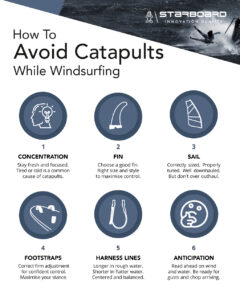
1. Concentration
Catapults often happen when you get tired and lose concentration. So when you start feeling tired and unfocused, head back to the beach. Take a break instead of going for another entire power run immediately.
2. Fin
Spinouts can lead to gnarly catapults; fins that are too small can lead to you having spinouts. On the flip side, a fin that is too big gives too much lift, and you will be out of control, leading to more catapults. Make sure your fin size is correct for your board and conditions so you can stay in control for longer.
3. Footstraps
Of course, you can still have a catapult even if you are standing firmly in both straps. BUT having both feet in the straps gives you more control over the board. This will make it harder for the sail to catapult you forwards when things go wrong. A firmer stance could save you from another catapult.
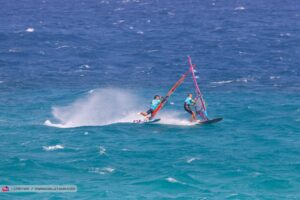
4. Anticipation
Reading the wind and the waves in front of you is crucial. While blasting along full power, your legs should be working like shock absorbers for the waves and chop ahead. When you see more wind ahead of you, get ready by either sheeting out and decreasing the power in your sail. Or lean back more firmly in preparation for the gust about to hit you and get ready to accelerate.
5. Adjustable Harness Lines
Being able to adjust your lines is essential while adapting to differing conditions. Start by making the harness lines the length of your forearm. Then make them longer for wavy and choppy conditions and shorter on very flat water. Make sure to centre them on both sides of the balance point on your boom, and be ready to fine-tune according to sail size and type.
6. Sail
Choosing a sail with a low centre of effort will lead to the sail pitching forward less. Tuning it properly with enough downhaul and not too much outhaul will make your sail more stable and comfortable. We recommend watching a tuning guide for your sail online.
What To Do When You Can’t Avoid The Catapult?
We hope that our 6 tips on avoiding catapults will help you prevent some damage, but a wise man once said ‘no good windsurfer has never catapulted’. It is part of the game of learning to windsurf, and as you can see in the pictures, even multiple times, world champions still catapult sometimes. Sarah-Quita’s top tip for when you can no longer avoid it is to go with it. By sheeting in hard with your sail and pushing the mast forwards, you should hopefully miss the nose of your board with your mast and rotate round like a forward loop without the takeoff. While learning to forward loop, a common technique is practising precisely this kind of catapult crash.
Do you want to watch some fun Catapults of other Pro riders? Continent Seven has got you covered. Check it out here.
Sarah-Quita and Matteo Iachino are riding their iSonic’s in these pictures.
Take a look at our other Windsurfing Tips to help you progress on your windsurfing journey.
You can also check out all our Windsurfing Tips on our Windsurfing Tips Youtube Channel Playlist

